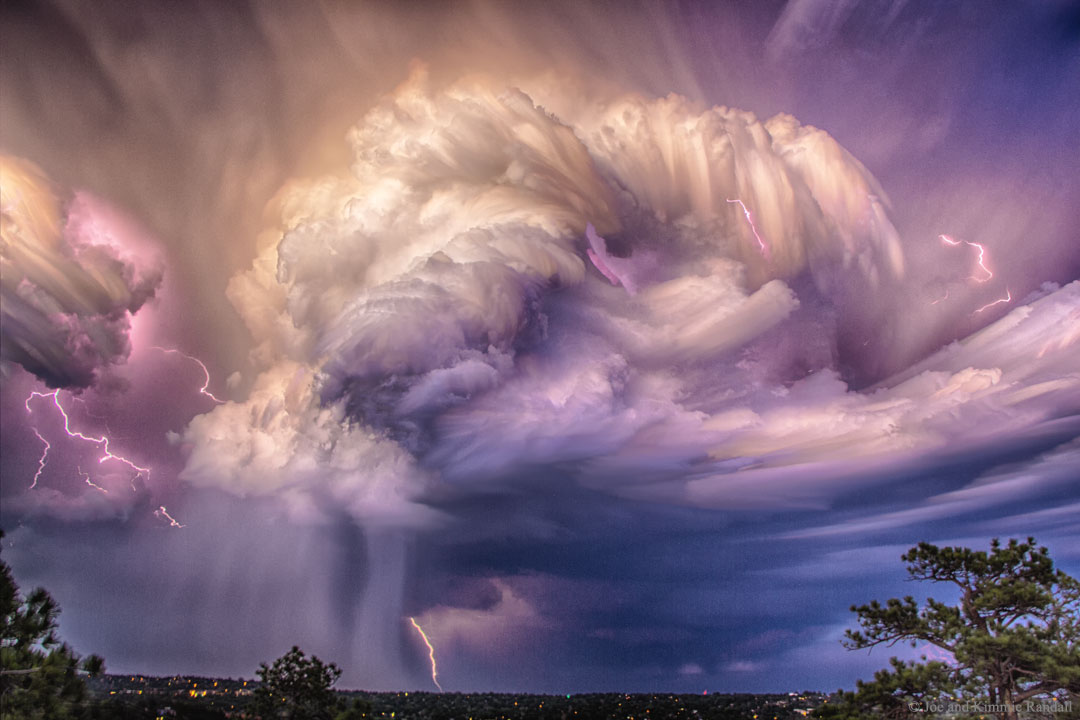Blog
Koko Taylor (born Cora Anna Walton, September 28, 1928 – June 3, 2009) was an American singer whose style encompassed Chicago blues, electric blues, rhythm and blues and soul blues. Sometimes called “The Queen of the Blues”, she was known for her rough, powerful vocals.
Born on a farm near Memphis, Tennessee, Taylor was the daughter of a sharecropper. She left Tennessee for Chicago in 1952 with her husband, Robert “Pops” Taylor, a truck driver. In the late 1950s, she began singing in blues clubs in Chicago. She was spotted by Willie Dixon in 1962, and this led to more opportunities for performing and her first recordings. In 1963 she had a single on USA Records, and in 1964 a cut on a Chicago blues collection on Spivey Records, called Chicago Blues. In 1964 Dixon brought Taylor to Checker Records, a subsidiary label of Chess Records, for which she recorded “Wang Dang Doodle“, a song written by Dixon and recorded by Howlin’ Wolf five years earlier. The record became a hit, reaching number four on the R&B chart and number 58 on the pop chart in 1966, and selling a million copies. She recorded several versions of the song over the years, including a live rendition at the 1967 American Folk Blues Festival, with the harmonica player Little Walter and the guitarist Hound Dog Taylor. Her subsequent recordings, both original songs and covers, did not achieve as much success on the charts.
Taylor became better known by touring in the United States in the late 1960s and early 1970s, and she became accessible to a wider record-buying public when she signed a recording contract with Alligator Records in 1975. She recorded nine albums for Alligator, eight of which were nominated for Grammy awards, and came to dominate ranks of female blues singers, winning twenty-nine W. C. Handy/Blues Music Awards.
She survived a near-fatal car crash in 1989. In the 1990s, she appeared in the films Blues Brothers 2000 and Wild at Heart. She opened a blues club on Division Street in Chicago in 1994, which relocated to Wabash Avenue, in Chicago’s South Loop, in 2000 (the club is now closed).
In 2003, she appeared as a guest with Taj Mahal in an episode of the television series Arthur. In 2009, she performed with Umphrey’s McGee at the band’s New Year’s Eve concert at the Auditorium Theater, in Chicago.
Taylor influenced Bonnie Raitt, Shemekia Copeland, Janis Joplin, Shannon Curfman, and Susan Tedeschi.
more...How lightning is produced remains a topic of research. What is known is that updrafts carry light ice crystals into collisions with larger and softer ice balls, causing the smaller crystals to become positively charged. After enough charge becomes separated, the rapid electrical discharge that is lightning occurs. Lightning usually takes a jagged course, rapidly heating a thin column of air to about three times the surface temperature of the Sun. The resulting shock wave starts supersonically and decays into the loud sound known as thunder. Lightning bolts are common in clouds during rainstorms, and on average 44 lightning bolts occur on the Earth every second. Pictured, over 60 images were stacked to capture the flow of lightning-producing storm clouds in July over Colorado Springs, Colorado, USA.

Robert “Robbie” Shakespeare (born 27 September 1953) is a Jamaican bass guitarist and record producer, best known as the one half of the reggae rhythm section and production duo Sly and Robbie, with drummer Sly Dunbar. Regarded as one of the most influential reggae bassists,Shakespeare is also known for his creative use of electronics and production effects units. He is sometimes nicknamed “Basspeare”.
As a part of Sly and Robbie, Shakespeare worked with various reggae artist such as U-Roy, Peter Tosh, Bunny Wailer, Dennis Brown, Gregory Isaacs, Sugar Minott, Augustus Pablo, Yellowman and Black Uhuru. His production work also extended beyond the reggae genre, covering various pop and rock artists such as Mick Jagger, Bob Dylan, Jackson Browne, Cyndi Lauper, Joe Cocker, Yoko Ono, Serge Gainsbourg and Grace Jones. Prior to his involvement in Sly and Robbie, he was a member of the session groups The Revolutionaries and The Aggrovators.
Shakespeare grew up in East Kingston, Jamaica. He had a musical family, so that “his family home was a rehearsal and hangout spot for a variety of upcoming musicians and singers.” His brother Lloyd had a band called the Emotions which rehearsed in the house. Shakespeare’s first instrument was an acoustic guitar that was always present in the home. Later, the band Familymancame into his yard, as it was near a popular location for selling marijuana. Shakespeare had been trying acoustic guitar and drums, but when he heard Familyman’s bass player, he was attracted to the deep bass sound. Shakespeare recalled saying “I wan fi learn how to play this thing [bass]. You haffi teach me”. Even though Familyman’s bassist insisted that he was just learning the instrument himself, he agreed to give Shakespeare bass lessons.
more...Earring George Mayweather (September 27, 1927 – February 12, 1995) was an American electric blues and Chicago blues harmonica player, songwriter and singer. He recorded only one solo album, but he played the harmonica on recordings by J. B. Hutto and Eddie Taylor. AllMusic commented that his album Whup It! Whup It! was “an admirable shot at recreating the ’50s Chicago harp sound”.
George Mayweather Jr. was born in Montgomery County, Alabama. He learned to play the harmonica after receiving the instrument as a Christmas present at the age of six. Inspired by the playing of Sonny Boy Williamson I, Mayweather mainly taught himself the rudiments of the instrument. Upon his relocation to Chicago, Illinois, in September 1949, he befriended Little Walter, who taught him techniques of harmonica playing. He lived in Chicago, next door to J. B. Hutto, and in 1951 he teamed up with Hutto and the percussionist Eddie “Porkchop” Hines to form the Hawks, a trio performing on weekends at the Maxwell Streetmarket. With few opportunities for steady work, Mayweather alternately performed with Hutto and in Bo Diddley‘s backing ensemble. In 1952, when Little Walter left Muddy Waters‘s touring band, Montgomery was offered a job as his replacement, but Mayweather declined the potentially lucrative position. By 1954, Mayweather recorded with Hutto in sessions for Chance Records, which produced “Dim Lights”, “Things Are So Slow”, “Combination Boogie”, and “Pet Cream Man”. He later teamed up Eddie Taylor, and together they recorded a number of tracks, including “You’ll Always Have a Home” and “Don’t Knock at My Door”. Several of these were released as singles, but they were not commercial successes.
more...Robert Roland Chudnick (September 27, 1927 – May 27, 1994), known professionally as Red Rodney, was an American jazz trumpeter.
Born in Philadelphia, Pennsylvania, he became a professional musician at 15, working in the mid-1940s for the big bands of Jerry Wald, Jimmy Dorsey, Georgie Auld, Elliot Lawrence, Benny Goodman, and Les Brown. He was inspired by hearing Dizzy Gillespie and Charlie Parker to change his style to bebop, moving on to play with Claude Thornhill, Gene Krupa, and Woody Herman. He is Jewish.
He accepted an invitation from Charlie Parker to join his quintet. and was a member of the band from 1949–1951. Being the only white member of the group, when playing in the southern United States he was billed as “Albino Red” as a ruse to avoid prejudice against mixed race musical combos. During this time he recorded extensively.
more...
Earl Rudolph “Bud” Powell (September 27, 1924 – July 31, 1966) was an American jazz pianist and composer. Along with Charlie Parker, Thelonious Monk, and Dizzy Gillespie, Powell was a leading figure in the development of bebop. His virtuosity led many to call him the Charlie Parker of the piano. Powell was also a composer, and many jazz critics credit his works and his playing as having “greatly extended the range of jazz harmony.”
Powell’s father was a stride pianist. Powell started classical piano lessons at the age of five. His teacher, hired by his father, was a West Indian man named Rawlins. At ten, Powell showed interest in the swing music that could be heard all over the neighborhood. He first appeared in public at a rent party, where he mimicked Fats Waller‘s playing style. The first jazz composition that he mastered was James P. Johnson‘s “Carolina Shout”. Powell’s older brother, William, played trumpet and violin, and by the age of 15 Powell was playing in William’s band. Powell heard Art Tatum on the radio and tried to match his technique. Powell’s younger brother, Richie Powell, was also a noted bebop pianist.
https://www.youtube.com/watch?v=NpNAKrFLqfU
more...Resting on the tail of the Great Bear in the constellation of Ursa Major, lies NGC 5585, a spiral galaxy that is more than it appears. The many stars, and dust and gas clouds that make up NGC 5585, shown here in this Hubble image, contribute only a small fraction of the total mass of the galaxy. As in many galaxies, this discrepancy can be explained by the abundant yet seemingly invisible presence of dark matter. The stellar disc of the galaxy extends over 35 000 light-years across. When compared with galaxies of a similar shape and size, NGC 5585 stands out by having a notably different composition: Contributing to the total mass of the galaxy, it contains a far higher proportion of dark matter. Hotspots of star formation can be seen along the galaxy’s faint spiral arms. These regions shine a brilliant blue, contrasting strikingly against the ever-black background of space.

Victor Edward Jurusz Jr. (September 26, 1953 – December 31, 2019), known professionally as Vic Juris, was an American jazz guitarist.
Juris was born in Jersey City, New Jersey, but he moved with his family to Parsippany early in his life. In 1963, at the age of 10, he began learning guitar. At 11, he studied guitar at the home of his teacher, Ed Berg, and got interested in jazz listening to Berg’s records of guitarists Django Reinhardt, Jim Hall, Barney Kessel, Jimmy Raney, and Johnny Smith. When asked about albums that made an impact on him as a kid, Juris cites Rubber Soul by The Beatles, The Dynamic Duo by Wes Montgomery and Jimmy Smith, Larry Coryell‘s debut album, and Are You Experienced by Jimi Hendrix. In his teens he played the rock music of the 1960s. When he was 19, he met blind saxophonist Eric Kloss and they became friends. He made his first recording on Kloss’s album Bodies’ Warmth (Muse, 1975). Around the same time, he met guitarist Pat Martino, who became a friend and mentor.
Juris recorded with Richie Cole during 1976–78 and released his debut album as a leader, Road Song, in 1979. In the early 1980s, he turned to acoustic guitar in duos with Larry Coryell and Biréli Lagrène, and in the late 1980s he worked with Gary Peacock‘s band. Since 1991 he has spent much of his career with saxophonist David Liebman.
During the 1990s, he worked as sideman with Lee Konitz and Peggy Stern (1992), Benny Waters (1993), Jeanie Bryson (1993–94), Gary Peacock (since 1994), Steve LaSpina (since 1995), Judi Silvano (1996), Ken Serio (1996, 2007,2019) and Joe Locke (1998).
more...Gary Bartz (born September 26, 1940) is an American jazz saxophonist. Bartz studied at the Juilliard Conservatory of Music. In the early 1960s, he performed with Eric Dolphy and McCoy Tyner in Charles Mingus‘ Jazz Workshop. He worked as a sideman with Max Roach and Abbey Lincoln before joining Art Blakey and the Jazz Messengers. In 1968, he was a member of McCoy Tyner‘s band Expansions.
In mid-1970, he joined Miles Davis‘ band, performing live at the Isle Of Wight festival in August and at a series of December dates at The Cellar Doorclub in Washington, D.C. Portions of these shows were initially released on the 1971 Live-Evil album, with the entire six performance/four night run eventually released in full on the 2005 Cellar Door Sessions box set. He later formed the band Ntu Troop, which combined jazz, funk, and soul.
more...George Gershwin (/ˈɡɜːrʃ.wɪn/; born Jacob Bruskin Gershowitz; September 26, 1898 – July 11, 1937) was an American composer and pianist whose compositions spanned both popular and classical genres. Among his best-known works are the orchestral compositions Rhapsody in Blue(1924) and An American in Paris (1928), the songs “Swanee” (1919) and “Fascinating Rhythm” (1924), the jazz standard “I Got Rhythm” (1930), and the opera Porgy and Bess (1935) which gave birth to the hit “Summertime“.
Gershwin studied piano under Charles Hambitzer and composition with Rubin Goldmark, Henry Cowell, and Joseph Brody. He began his career as a song plugger but soon started composing Broadway theater works with his brother Ira Gershwin and with Buddy DeSylva. He moved to Paris intending to study with Nadia Boulanger, but she refused him. He subsequently composed An American in Paris, returned to New York City and wrote Porgy and Bess with Ira and DuBose Heyward. Initially a commercial failure, it came to be considered one of the most important American operas of the twentieth century and an American cultural classic. Gershwin moved to Hollywood and composed numerous film scores. He died in 1937 of a malignant brain tumor. His compositions have been adapted for use in film and television, with several becoming jazz standards recorded and covered in many variations.
more...Celebrated Algerian singer and violinist Hamdi Benani died September 21, 2020 of COVID-19.
Benani was born January 1, 1943 in Annaba, French Algeria. He learned music from his uncle M’hamed El Kourd. Benani was inspired by maesters such as Hassen Al-Annabi, Mohamed Tahar Fergani, and Abdelmoumène Bentobal.
The Algerian icon became popular with his 1963 song “Ya Bahi El Djamel.” He brought new attention to the Arab-Andalusian Maluf musical genre with successful songss like “Mahbounati” and “Adala Ya Adala.”
Benani was known as “l’ange blanc” (the white angel) because he always appeared on stage with a white suit with his beloved white violin.
His most popular albums include “Ya Ahl Ellil Tahya Bikoum,” “Bahi Al-Djamel,” “Min Chit Frikitti,” and “Achiq Al-Mahboub Dar Al-Hiba.”
more...Clipper Ogwang, one of the leading players of the Ugandan harp known as nanga, passed away on Thursday, September 24, 2020 at Gulu Regional Referral Hospital.
Ogwang was born in 1936. He started as a singer and learned how to play his father’s nanga. In 1956, he studied guitar and won various guitar competitions in Agago, Omoro and Chua. Later, he went back to his popular nanga music.
more...https://www.youtube.com/watch?v=TsnGLhb6l1A
more...Friday 9-25-20 Last Facebook Club Calabash moving to YouTube. mick will do his Stones Roots session.

More Posts
- Erskine Hawkins Day
- World Music with Juan Serrano
- Daily Roots with I Kong
- The Cosmos with the Deneb Star
- Don Ellis Day
- Johnny Hodges Day
- Semmangudi Srinivasa Iyer Day
- World Music with Alim Qasimov
- Daily Roots with Jah Mel
- The Cosmos with NGC 2798
- Charles McPherson Day
- Billy Taylor Day
- World Fusion with La Cuneta Son Machin
- Daily Roots with Winston Jarrett
- New Orleans Legend Art Neville Dies
- The Cosmos with M82
- Allison Krauss Day
- Steve Lacy Day
- Champion Jack Dupree Day
- World Music with Benjamin Sylvestre Randafison